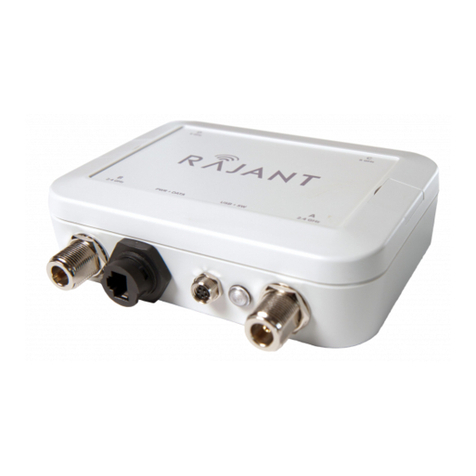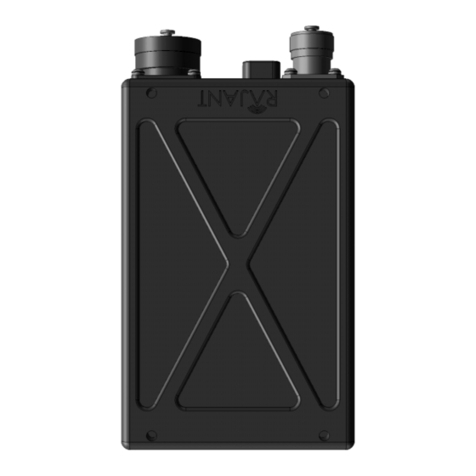
Rajant Corporation BreadCrumb
®
ME3 User Guide
03-100116-001 Version: 2.01
Table of Contents
FCC and IC Statements..................................................................................................ii
Copyright Statement.......................................................................................................ii
Preface....................................................................................................................................v
Purpose and Scope.............................................................................................................v
User Information..................................................................................................................v
Related Documentation.......................................................................................................v
1 Introduction to BreadCrumbs..........................................................................................1
1.1 What is a BreadCrumb?...............................................................................................1
1.2 Mobility through Meshing.............................................................................................2
1.2.1 Mesh – A Definition...............................................................................................2
1.2.2 BreadCrumb Mesh Connections..........................................................................2
2 Description of a BreadCrumb ME3..................................................................................5
2.1 Radio............................................................................................................................5
2.2 Enclosure.....................................................................................................................6
2.3 18-Pin Amphenol Connector........................................................................................7
2.3.1 Power....................................................................................................................7
2.3.2 Ethernet................................................................................................................8
2.3.3 USB.......................................................................................................................8
2.4 Antenna Connector......................................................................................................8
2.5 Status LED...................................................................................................................8
2.6 LED Configuration / Zeroize Keys and Restore Factory Defaults Switch...................9
2.6.1 LED Configuration..............................................................................................10
2.6.2 Zeroize Keys and Restore Factory Defaults.......................................................10
2.7 Internal Battery...........................................................................................................11
2.7.1 Protection Circuit................................................................................................12
2.7.2 Charging Circuit..................................................................................................12
2.7.3 Gas Gauge Circuit..............................................................................................12
2.7.4 Battery Monitoring...............................................................................................13
3 Using BC|Commander....................................................................................................15
4 Deploying the BreadCrumb Wireless Network............................................................17
4.1 Addressing.................................................................................................................17
4.1.1 BreadCrumb Device Addresses.........................................................................17
4.1.2 DHCP..................................................................................................................17
4.2 Channel Assignments................................................................................................17
4.3 Physical Placement and other Considerations..........................................................18
4.3.1 Line-of-Sight.......................................................................................................18
4.3.2 Distance..............................................................................................................18
iii





























